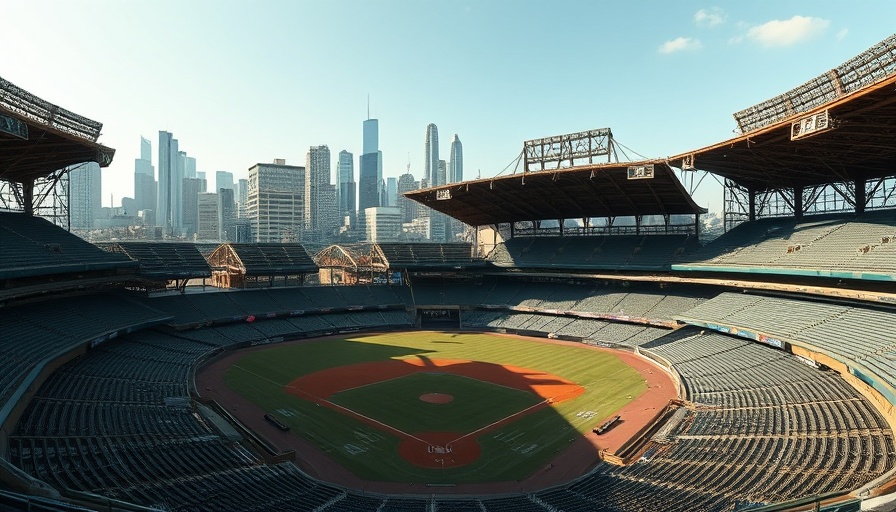
Heading Toward Uncertainty: The Rays' Stadium Departure
The Tampa Bay Rays have taken a significant turn in their quest for a new home, announcing they are withdrawing from a $1.3 billion stadium deal with St. Petersburg, Florida. This unexpected decision follows a turbulent period marked by natural disasters and funding complications that have caused disarray within the franchise's immediate future.
Stuart Sternberg, principal owner of the Rays, cited the aftermath of Hurricane Milton, which severely damaged the existing Tropicana Field and brought financial uncertainties to the forefront, leading the organization to this challenging conclusion. With the season opener just around the corner, the team now faces the reality of playing at Steinbrenner Field, the New York Yankees’ spring training venue, as they await repairs on their historic field.
Stormy Weather and Delays: The Conception of a Dream
The planned stadium at the Historic Gas Plant District was envisioned as an anchor for a massive $6.5 billion redevelopment project aimed at revitalizing an area that has faced economic challenges for years. This project was meant to bring opportunities for affordable housing, entertainment venues, and even a Black history museum to a site long neglected by such ambitions. Unfortunately, the severe weather events that struck last year have now overshadowed these hopes.
These storms not only halted progress but has pushed the Rays and the involved parties into a corner regarding financing. Delays in securing funding from the Pinellas County Commissioners due to these natural disasters have raised concerns regarding the viability of the deal and the organization’s financial commitments moving forward.
What Lies Ahead for Tampa Bay Baseball?
The future of baseball in the Tampa Bay area now hangs in the balance. With the Rays' current lease at Tropicana Field set to expire in 2027, the team must now contend with evaluating public interest and attendance during the upcoming season at Steinbrenner Field to devise their next steps.
St. Petersburg Mayor Ken Welch expressed disappointment but remains optimistic about future developments. He emphasized that while the Rays' decision is a setback, it does not signify the end of progress in revitalizing the Historic Gas Plant District. The city plans to pursue refurbishments to Tropicana Field, with hopes to ready it for the 2026 season, despite the present uncertainty hanging over the baseball community.
Changing Ownership Dynamics: A Potential Sale?
The Rays' pullout from the stadium deal brings additional scrutiny to owner Stuart Sternberg. Reports suggest that pressure is mounting on him to either sell the team or explore relocation options. Some potential investors have already shown interest, including a group of prominent Tampa Bay investors eager to take the reins of the franchise if needed.
Furthermore, Major League Baseball has expressed commitment to finding a viable permanent home for the Rays within the Tampa Bay region, indicating this situation is not static, but rather an evolving narrative that could change with new leadership or agreements.
The Impact of Infrastructure on Community Development
The developments surrounding the Rays’ stadium highlight a broader narrative regarding infrastructure and community engagement in urban settings. For an area once marginalized, the proposed changes have the potential to uplift and provide essential services and spaces for the local population.
Understanding the layers of this story reveals a complex interplay between sports, local identity, and economic viability. Though the immediate future feels uncertain, the hope remains that a solution will come to pass that benefits the city and its residents, alongside the baseball community.
Concluding Thoughts: Why You Should Stay Informed
This ongoing situation underscores the importance of staying informed about how local decisions in sports can ripple through entire communities. The implications extend far beyond baseball, encapsulating the essence of community development and resilience amidst challenges. As the story unfolds, keep an eye on how this will shape the Tampa Bay region's socio-economic landscape moving forward.
 Add Row
Add Row  Add
Add 




Write A Comment